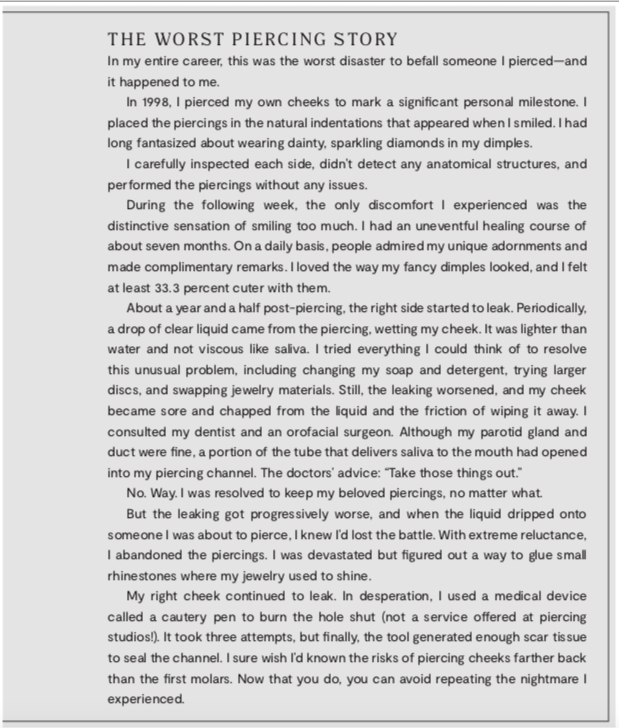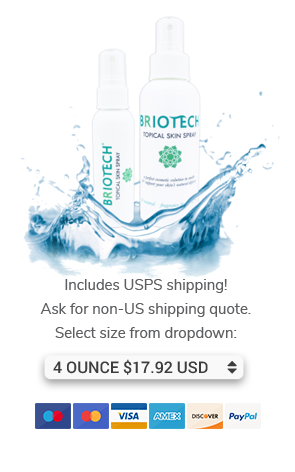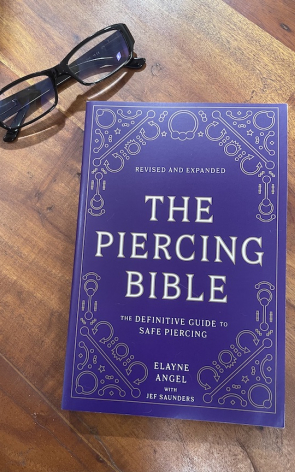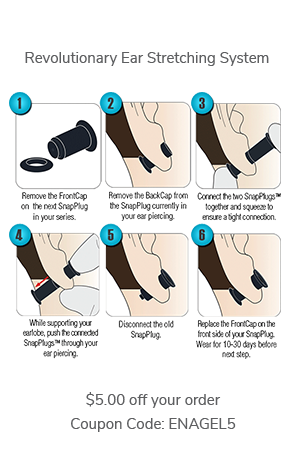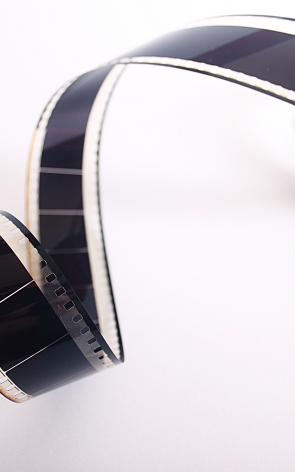Updated 2024
I received a question from a piercee who had gotten her cheeks pierced:
I got my cheeks pierced last Saturday. It didn't hurt at all and I was really happy with them because I had been wanting it done for so long. They aren't too far back, they are perfect. BUT.. the next day they were really swollen and have been getting more and more swollen everyday. The balls on the inside of my mouth are digging into my cheeks and I have no way to contact my piercer since I lost her card and it was done at a street fair and that is gone now. When i push the ball from the inside out, puss comes out. It's a yellowish white color. All around the piercings on the outside is hard. I really don't want to take the piercings out since I have wanted them for so long and spent so much money on getting them done. I can't even go to a local shop because nobody around here does cheek piercings. (Nobody ever wanted to pierce them for me in the shops because of the risks, that's why I think it was so expensive) I also heard that if it is infected, (which I really hope it isn't) taking out the piercing could trap the infection inside when the hole closes... I've been cleaning them with saline solution and rinsing my mouth with water and the salt that the piercer gave me, and I am also taking Ibuprofen for the swelling and eating lots of ice and putting ice on my cheeks. I really need your advice! Thanks.
My reply:
If your jewelry is so short that it may become embedded you MUST get the jewelry changed to longer bars. And you should have flat discs on the inside--not balls. The balls represent greater danger to your teeth; a flat disc is defintely safer.
I don't have a lot of trust in a piercer who works in an environment like a street fair, so even if you thought it expensive, I would't be surprised if you're wearing cheap/poor quality jewelry. So if you want to try to keep your piercings, you must get the jewelry changed. Even though the local piercers wouldn't perform cheek piercings, they may be willing to help you out now that you've got them. PLEASE contact a local piercer for assistance.
It is true that something should be left in, in the event of an infection, but your jewelry should be changed for an appropriate style (flat backs), better fitting, high quality jewelry.
The aftercare I advocate is here: http://www.safepiercing.org/piercing/oral-aftercare/
Below is the story that appears in my book, The Piercing Bible:

